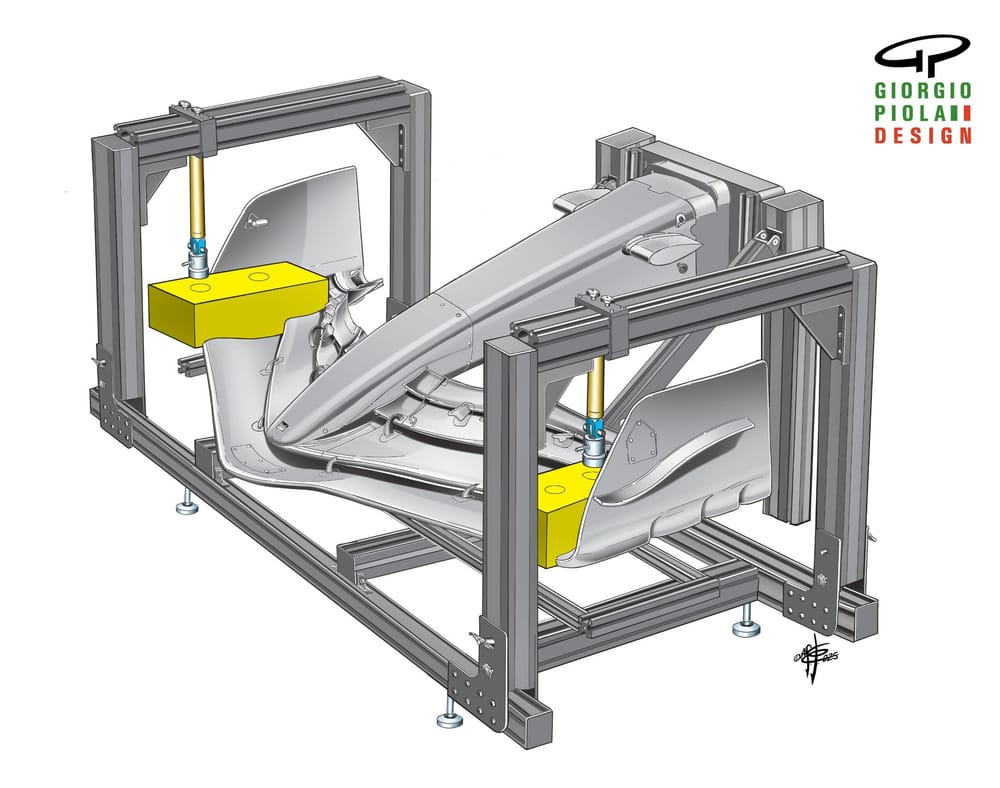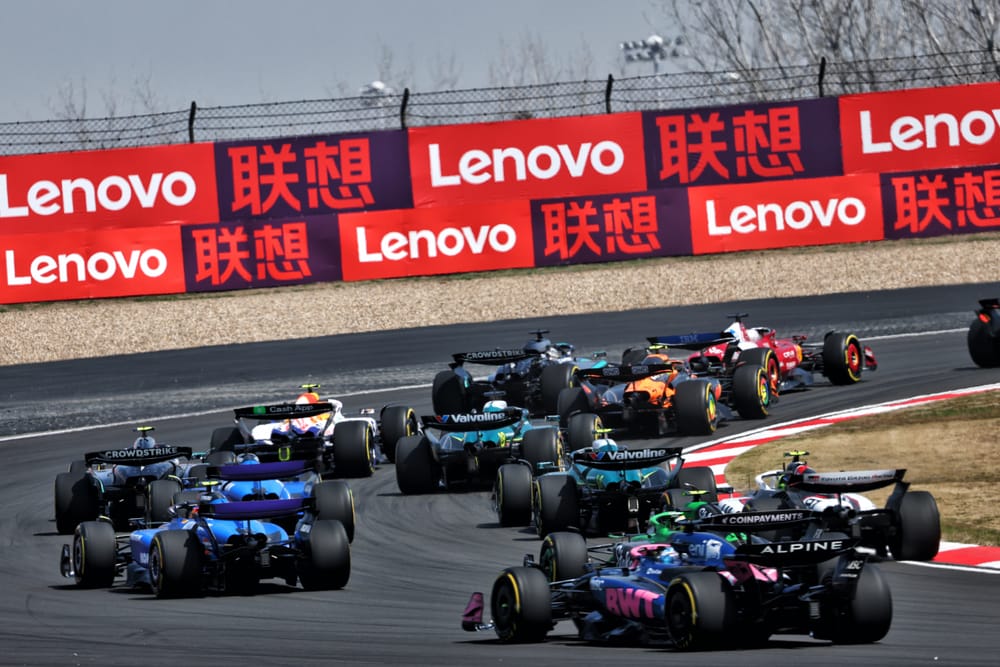Formula 1’s Spanish Grand Prix marks the start of a potential reset in the pecking order as the first race where new tests to clamp down on flexible front wings are in force.
Flexing bodywork has become a major talking point in F1 again over the last year or so, amid McLaren’s rise to being the benchmark team.
While McLaren has insisted that front and rear wing aeroelasticity has not been the silver bullet, Red Bull and Ferrari have been vocal critics of what they perceived to be flexi-wing tricks that had gone too far.
The FIA has looked into the matter extensively, making gradual revisions to the tests that police flexible bodywork at the front and rear of the car - including informing teams over the winter that, having initially intended to leave the rules alone in 2025, more changes were coming after all.
And at Barcelona, teams will need to comply with new tests that - according to some - could shake things up throughout the grid.
“We are working on it for ages now,” said Ferrari boss Fred Vasseur in Monaco last weekend.
“This can be a gamechanger for everybody because we don't know the impact on every single team of the new regulation.
“We will be focused on this to have better exploitation of the front wing.”
What the new tests are
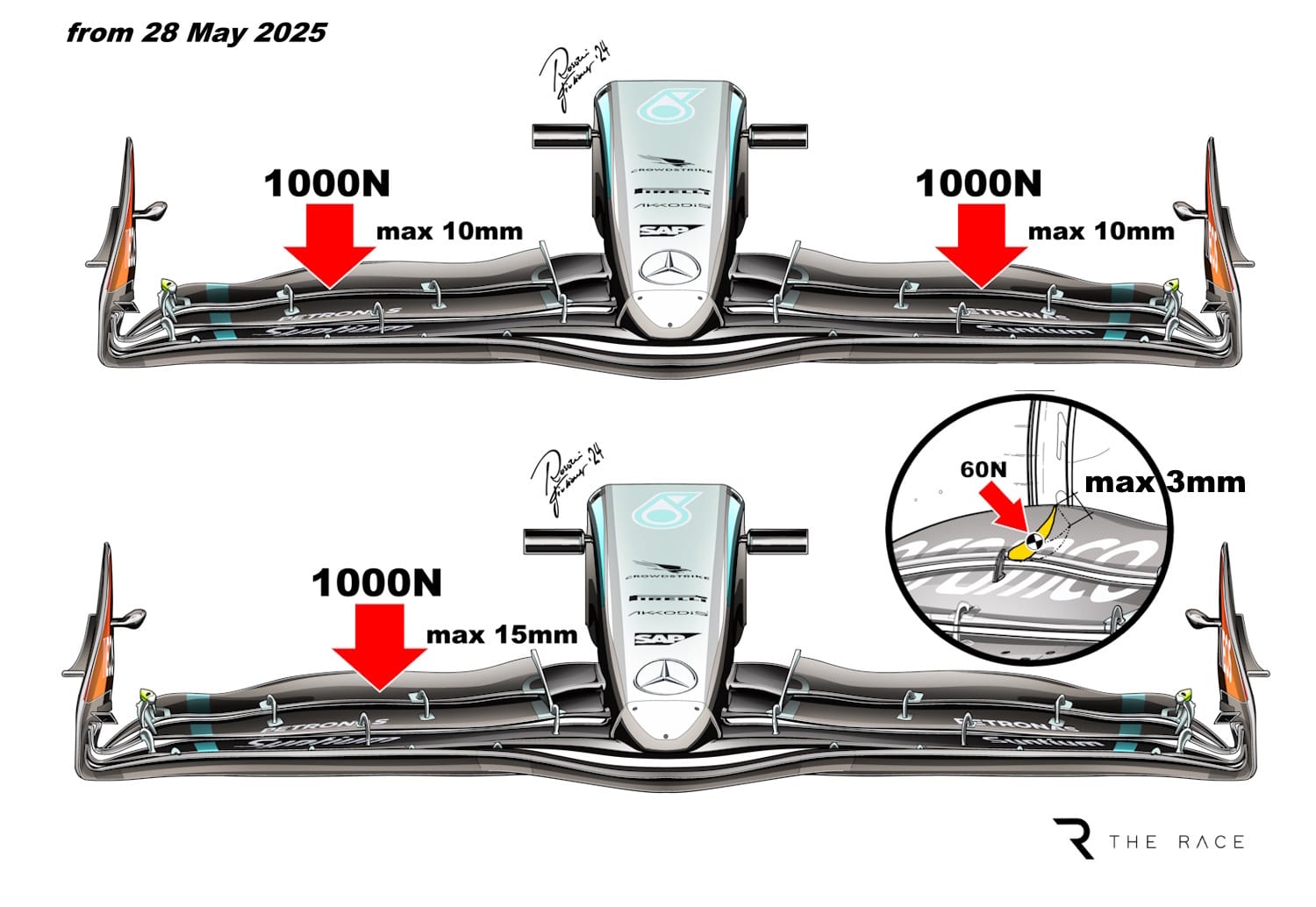
The new tests relate to how the F1 technical regulations police front wing bodywork flexibility.
When testing for excessive flexing, a load of up to 1000N is applied in a downward direction at two points along the wing.
Until the Spanish GP, vertical deflection up to 15mm was permitted when the load is applied symmetrically to both sides of the car, and up to 20mm when applied to only one side.
This changes as of Wednesday, May 28, taking 5mm off each total: so the vertical deflection must be no more than 10mm when the load is applied symmetrically to both sides of the car, and no more than 15mm when the load is applied to only one side.
There is a further test that takes place on the front wing flap. Until Spain, the rules were that any part of the trailing edge of any front wing flap may deflect no more than 5mm when measured along the loading axis, with a 60N point load applied.
This is to be reduced to no more than 3mm from Wednesday, May 28.
Why’s this happening?
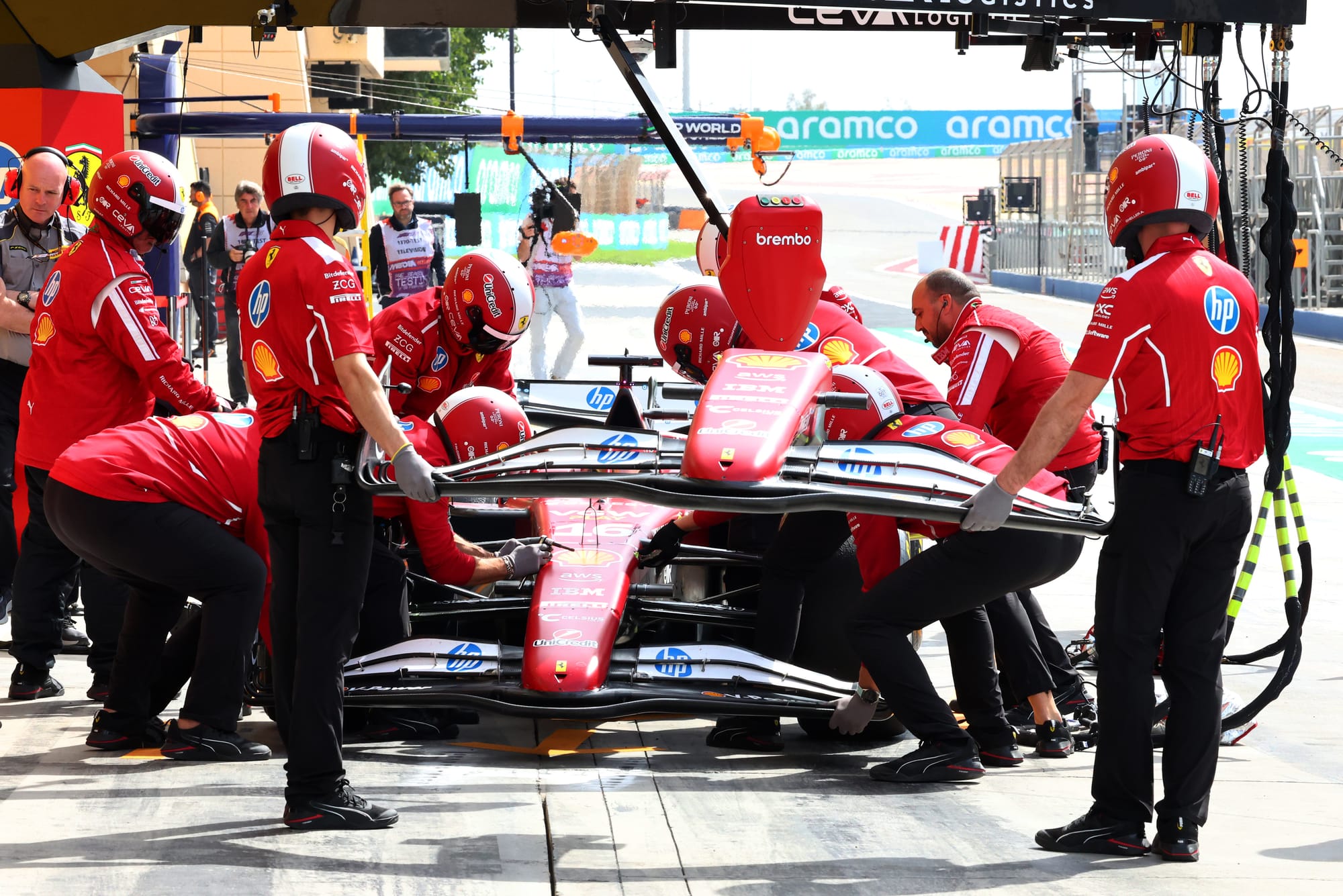
The FIA began an exercise from last year’s Belgian GP to monitor more closely what teams were doing on this front.
However, it said several times that it did not see anything untoward from its observation, and the FIA’s single-seater head, Nikolas Tombazis, originally said that the governing body was reluctant to rush through any changes to the technical regulations for 2025.
So when the tightening up of an existing technical directive emerged in January this year, after the FIA revised its position around last December, that was clearly a U-turn.
The FIA said it was attempting to draw a conclusive line under the flexi-wing arguments and “committed to ensure that bodywork flexibility is no longer a point of contention for the 2025 season”.
It argued that a “phased approach allows teams to adapt without the need to discard existing components unnecessarily”, although some were unhappy that the change was made in-season as it gave anyone utilising greater flexibility one-third of the season to keep benefitting.
The FIA also changed the rear wing regulations for the start of the season to try to eliminate so-called 'mini-DRS' effects, then beefed up those tests further immediately after the opening round in Australia.
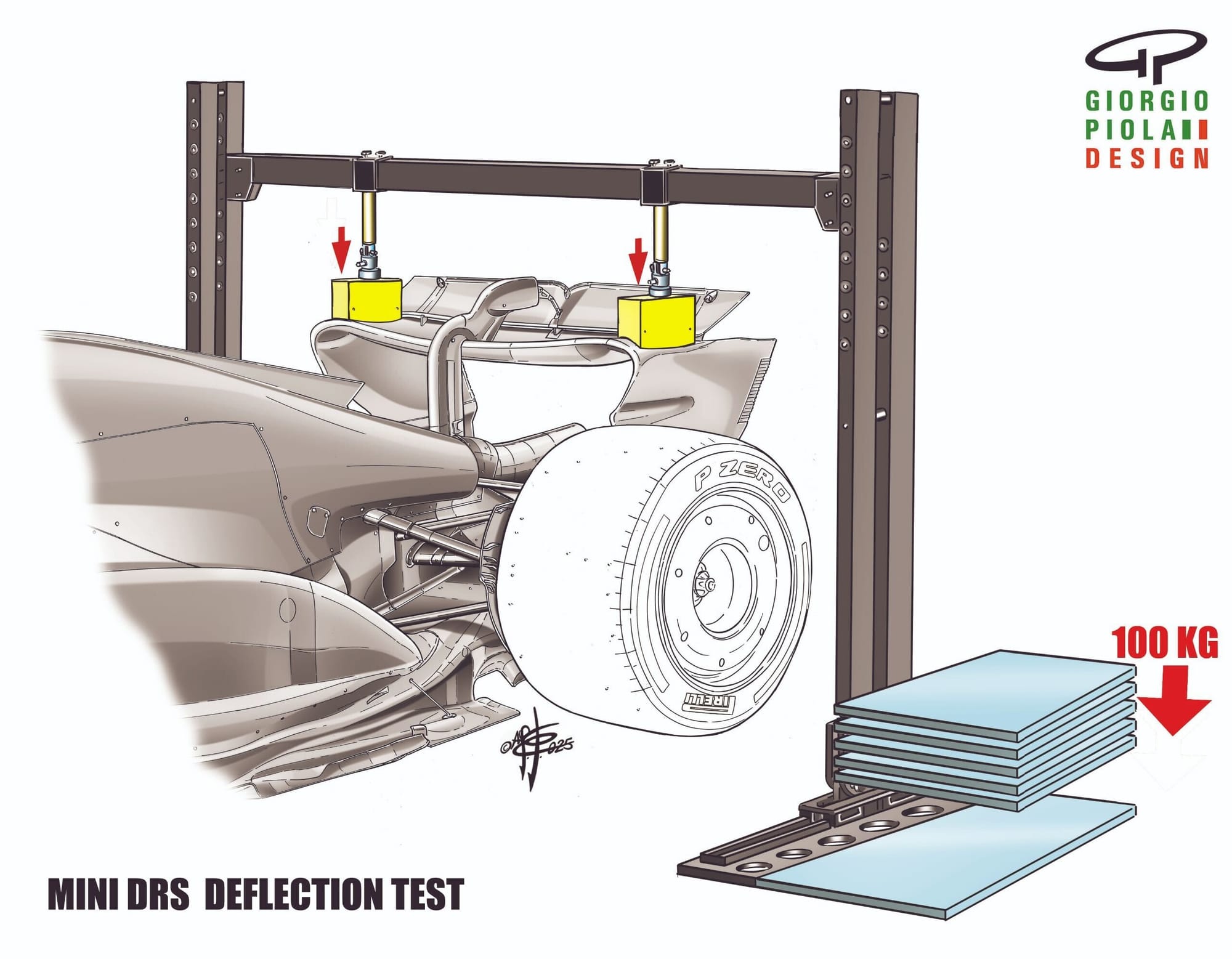
Asked about what changed from his previous position that the tests would stay the same in 2025, Tombazis explained at round two in China: “With the benefit of hindsight, I would have rather not said that.
"After the season, we analysed all the data we had gathered with the cameras and so on, and we felt that the trend was that these deflections would continue to increase a lot.
"We felt that we could end up in the middle of the season with fairly large deformations and again, a lot of complaints and pressures and so on.
"So we felt, rather than wait for the middle of the season and so on, let's try to act a bit more decisively early on."
Why it’s significant
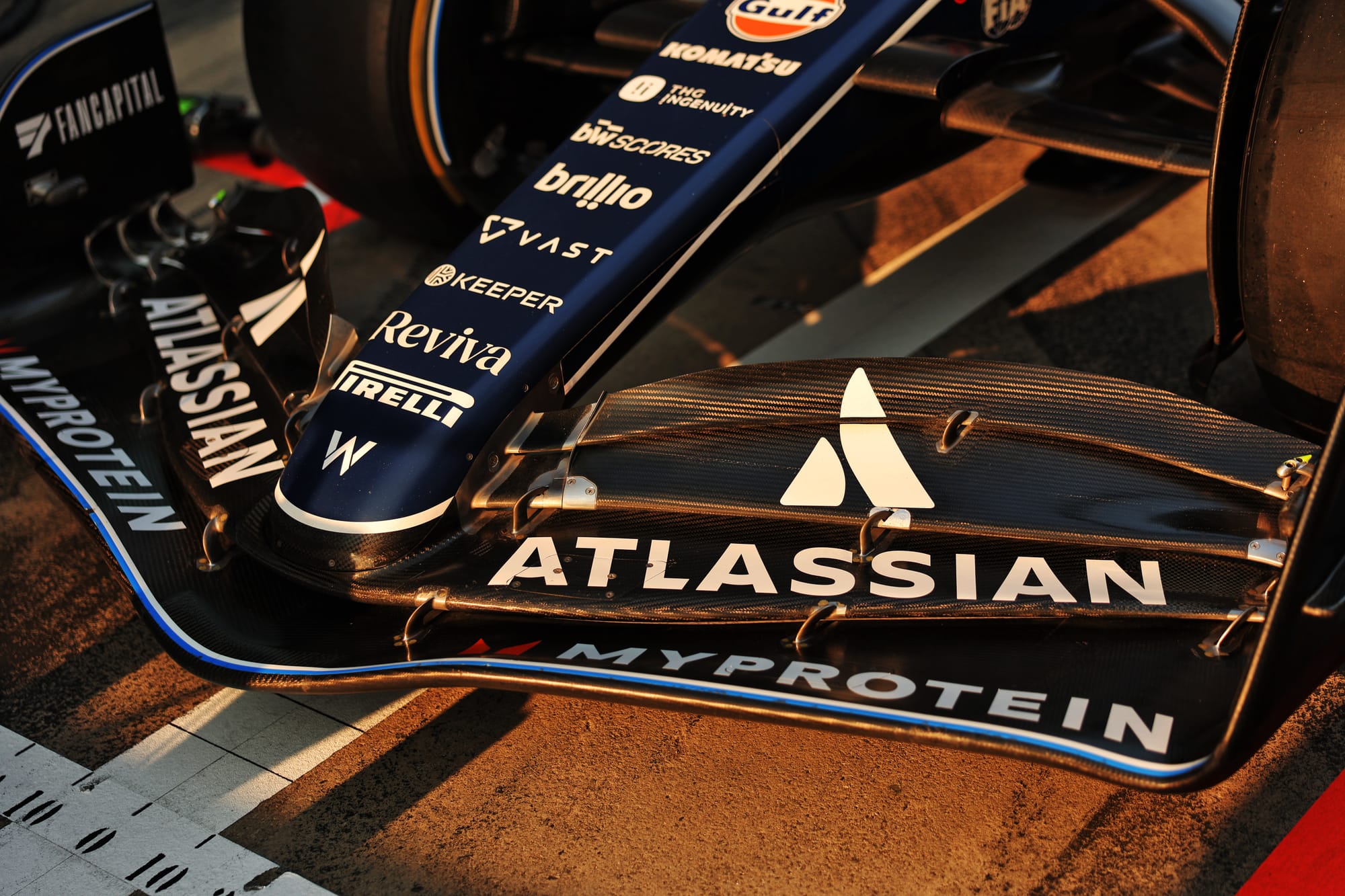
The two main reasons this matters are related. Flexible bodywork confers significant performance advantages; the longer someone has invested in exploring this area, the bigger the edge they will have.
So, cutting back what’s possible should level the playing field for anyone that was slow to exploit flexi-wings and/or was not exploiting it to the extent of others.
This is why Ferrari and Red Bull have been the most vocal proponents of the clampdown, and at the other of the grid Sauber has described it as a significant performance differentiator.
A flexible front wing can be particularly beneficial in the current ground-effect rules era.
The cars generate more downforce at high speed and it’s not just the floor: the front wing works in ground effect too, and can become too powerful as it gets pulled closer to the ground. Mercedes technical director James Allison once explained: “That tends to make a car get more nervous as it goes faster, because proportionately more is moving to the front axle than you might wish. And the more you find downforce near the ground, the worse that gets.”
So, the cars ideally need less wing to help avoid oversteer at high-speed. But too little wing and the car is not responsive in the slow corners - where the current cars tend to have understeer.
A flexible front wing that bends under load confers the advantage of backing off on straights and at high speed, therefore producing less downforce in fast corners, before ‘snapping back’ into position under braking to provide more downforce where it’s needed in slow corners.
It is, theoretically, the ideal mechanism to help balance out the traits of the ground-effect era cars.
Will it have an impact?
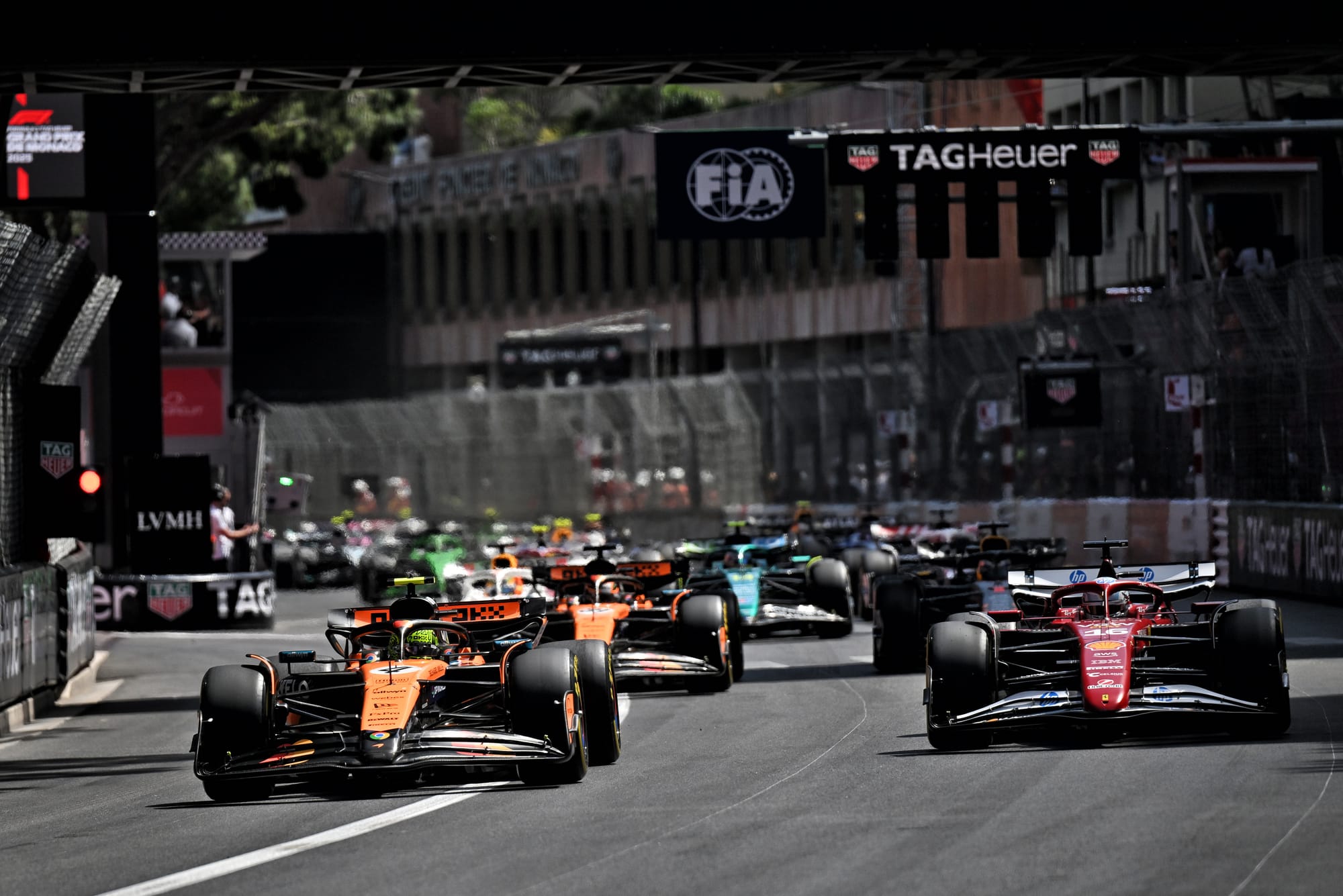
Naturally, if the advantage of flexible bodywork is as significant in reality as in theory, any team exploiting it more than another will suffer if it has to reduce what it is doing.
At the same time, anyone who was previously behind the curve now has the chance to get back on level pegging (or do a better job), getting the front wing to flex as much as possible while passing the new tests.
But what is the reality? That’s actually hard to tell. Some teams will say that this will have a big impact. Others expect very little difference - McLaren, for example, is adamant that flexing front wings are not the secret of its success and the new rules for Spain will not hold it back.
As teams have had notice of this since the winter, it’s possible that some have been running front wing designs in anticipation of the new tests. However, TV footage of various cars - including the Red Bull - makes it clear that there is a lot of flexing going on.
That will continue, because complete front wing rigidity is neither possible nor the intention, it is more a question of how different it is to before, how much it impacts different teams, and what (if any) impact there is on car characteristics, tyre usage and overall performance as a result.
“It’s essentially a regulation change,” said Horner.
“Maybe that will have zero impact on the running order, but it’s a change, and it will affect all the teams – maybe neutrally, but there will be an impact from it.”


